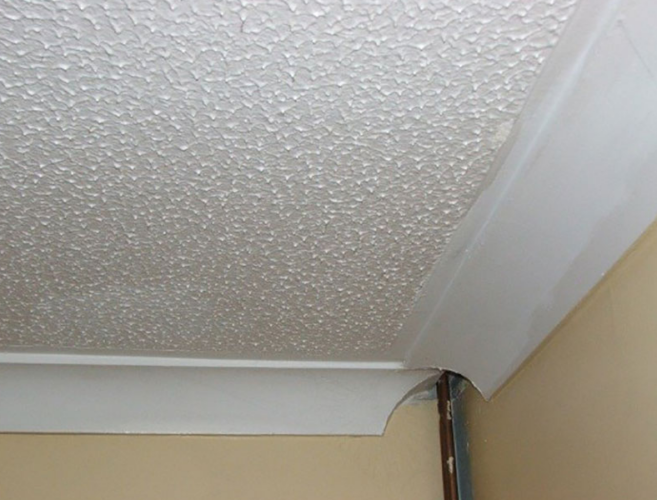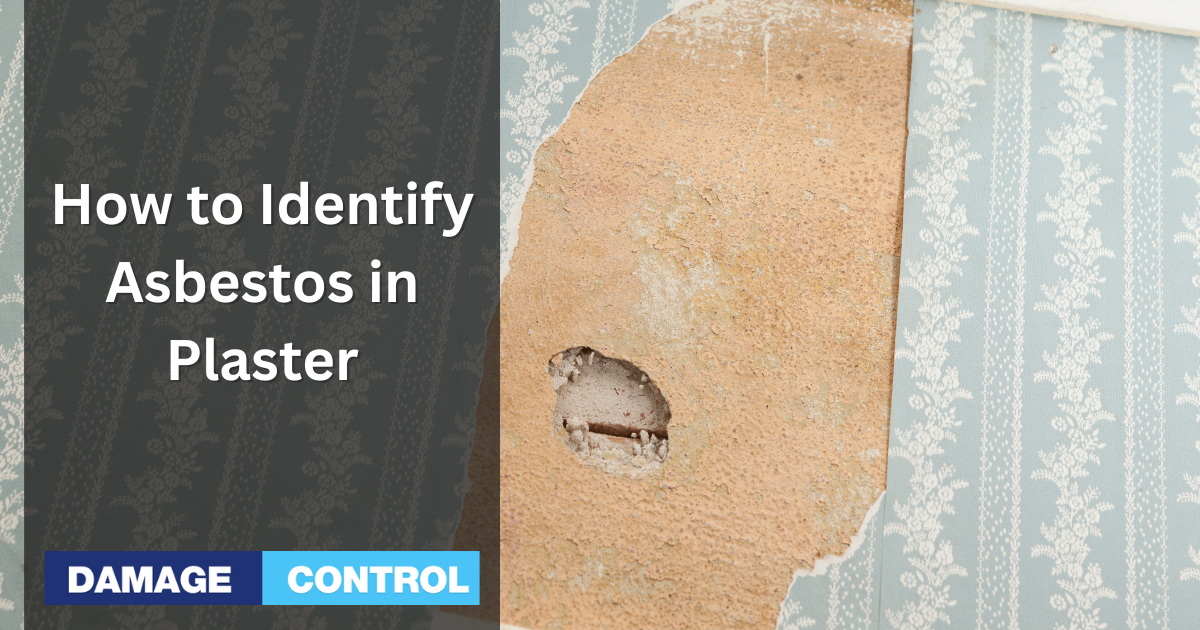Concerned your plaster walls or ceiling might have asbestos? This is a common worry, especially for homes built or renovated from 1942 to 1974 when asbestos was frequently used in building materials like plaster.
Identifying asbestos in plaster can be tricky as it's not visible to the naked eye. Here's how you can investigate:
Firstly, check your home's construction or renovation date. If it's within the years when asbestos was prevalent, consider getting it tested.
Look out for warning signs. “Fire-rated” plaster is more likely to contain asbestos as it was a common fire-retardant. Also, plaster in poor condition, showing cracks or dampness, could indicate the presence of asbestos.
In case of any doubt, always opt for professional testing. It's better to be safe when it comes to asbestos exposure.
Asbestos is a group of minerals utilized in construction for their heat resistance and insulation.
What Is Asbestos?
Asbestos is a group of minerals utilized in construction for their heat resistance and insulation.
Why Is Asbestos Dangerous?
The danger of asbestos lies in its potential to cause severe health conditions such as lung cancer, mesothelioma, and asbestosis when its tiny airborne fibers are inhaled.
Where Can Asbestos Be Found?
Asbestos can be located in multiple construction materials, including plaster. However, not all plaster has asbestos, so professional testing is advised if your home was constructed pre-1980 or you suspect the presence of asbestos.
It's crucial to remember that removing asbestos-containing materials should be left to licensed professionals to prevent the harmful release of asbestos fibers into your environment.
How to Tell If Plaster Has Asbestos

Asbestos is a hazardous material that was once commonly used in building materials, including plaster. If you live in an older home, you may be wondering whether your plaster contains asbestos. Here are two ways to tell if your plaster has asbestos: visual inspection and lab testing.
Visual Inspection
The first step in determining whether your plaster contains asbestos is to perform a visual inspection. Here are some signs that your plaster may contain asbestos:
- The plaster was installed between the 1940s and the 1970s, as this was the period when asbestos was commonly used in building materials.
- The plaster has a rough, textured surface, as asbestos was often mixed with plaster to create a textured finish.
- The plaster is cracking or crumbling, as this can release asbestos fibers into the air.
If you notice any of these signs, having your plaster tested for asbestos is important.
Lab Testing
The only way to know for sure whether your plaster contains asbestos is to have it tested in a laboratory. Here's how the lab testing process works:
- A sample of your plaster is collected by a trained professional using specialized equipment to minimize the release of asbestos fibers into the air.
- The sample is sent to a laboratory that specializes in asbestos testing.
- The laboratory analyzes the sample using a microscope to determine whether it contains asbestos fibers.
- If the sample contains asbestos, the laboratory will identify the type of asbestos present and provide recommendations for safe removal.
It's important to note that you should never attempt to collect a sample of your plaster yourself, as this can release asbestos fibers into the air and put you at risk of exposure. Instead, hire a professional to collect the sample and have it tested in a laboratory.
What To Do If You Find Asbestos In Your Plaster
Don't Disturb It
If you suspect that your plaster contains asbestos, you should first avoid touching or disturbing it. Asbestos fibers are dangerous when inhaled, and any disturbance could release them into the air. If the plaster is in good condition and not disturbed, it may be safe to leave it in place. However, if it is damaged or deteriorating, it should be removed as soon as possible.
Contact A Professional
Asbestos removal is a complex and dangerous process and should only be done by a trained and licensed professional. Contact a qualified asbestos abatement contractor to inspect your plaster and determine the best action. They will have the necessary equipment and expertise to remove the asbestos-containing plaster and dispose of it properly and safely.
Removal Options
When dealing with asbestos-containing plaster, you have two primary choices: encapsulation and removal.
Encapsulation is a process that seals the asbestos within a specialized coating, preventing the release of hazardous fibers. This method is often cost-effective and less intrusive. However, it might not be the best solution for all circumstances.
Removal, on the other hand, guarantees the complete elimination of asbestos-containing plaster from your home. This approach is more thorough but requires more time and financial investment. Professional asbestos abatement contractors use specific equipment for safe plaster removal, and disposal of the waste per local regulations.
Remember, dealing with asbestos should always involve professional help to ensure safety and regulatory compliance.

